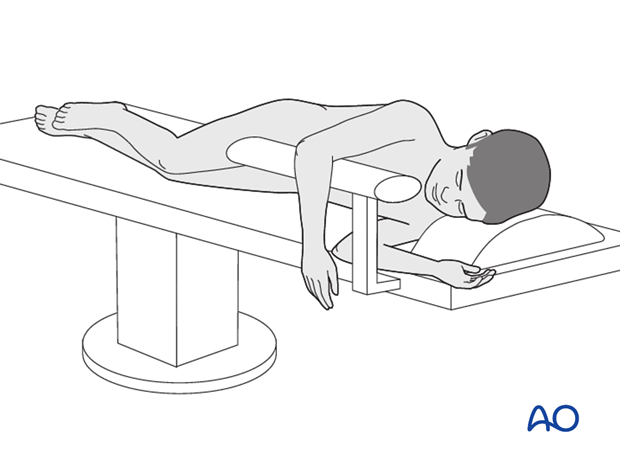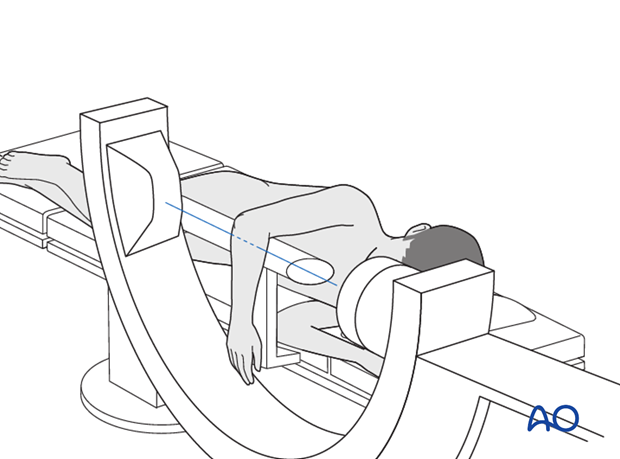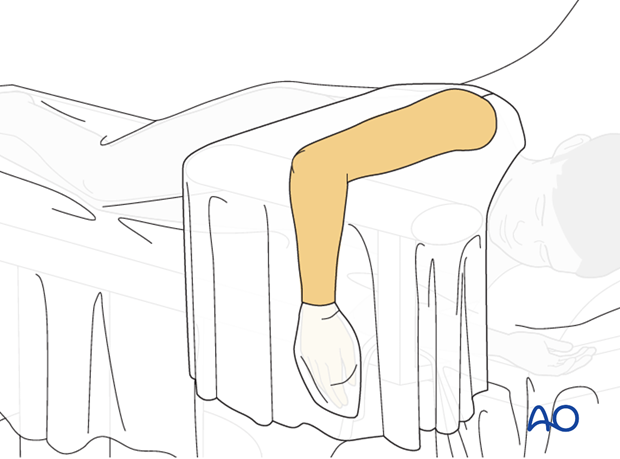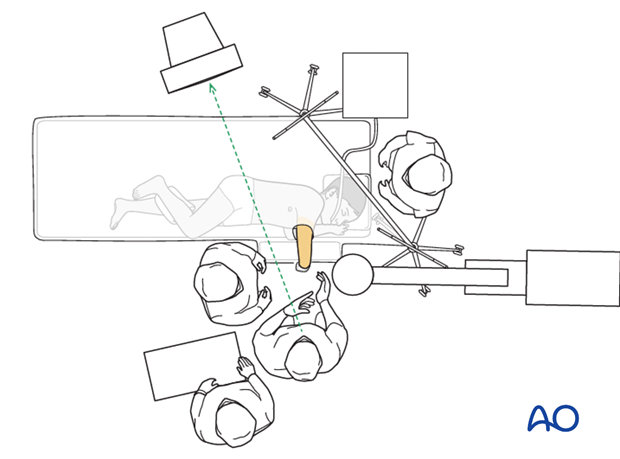Lateral decubitus position
1. Introduction
Advantages
- Good position for access to the posterior aspect of the elbow
- 110° elbow flexion is possible
- Reduced risk of contamination of the hanging hand
- Straightforward for anesthesia
Disadvantages
- Use of the C-arm is more difficult
- Less suitable for children below 6-8 years due to short upper arm
2. Preoperative preparation
The following are essential for successful surgery:
- Patient information
- Operating room personnel (ORP) information/instruction
- Surgical planning
3. Information for operating room personnel
Operating room personnel (ORP) need to know and confirm:
- Consent form, completed and signed
- Site and side of fracture
- Type of operation planned
- Surgical approach
- Operative site has been marked by the surgeon
- Condition of soft tissues
- Equipment/implants needed
- Patient positioning
- Duration of operation
- Positioning of image intensifier
- Antibiotic prophylaxis
- Comorbidities, including allergies
4. Surgical planning
The surgeon should make sure that:
- Relevant x-rays and other images are available in the OR.
- Required instruments and implants are accessible and ready.
- Tourniquet is available (a sterile tourniquet makes draping more straightforward).
- Image intensification is available.
- Intraoperative x-ray documentation should be undertaken, with clear AP and lateral views, before applying any plaster cast.
- There is a clear, step-by-step plan of the operation, including backup plans.
5. Anesthesia
- General anesthesia
- Local nerve block
- Combination of nerve block and light general anesthesia
- Prophylactic antibiotics (see local microbiological protocols.)
6. Patient positioning
Place the patient in a lateral decubitus position on the uninjured side, as close as possible to the edge of the table, with trunk support front and back.
The contralateral shoulder must be carefully positioned to prevent brachial plexus injury.
Place the injured arm either on a gutter support beneath the upper arm, or over a padded arm roll under the elbow.

7. C-arm positioning
Position the C-arm parallel to the operating table.
For AP view extend the elbow.

For lateral view rotate the C-arm, not the forearm.

8. Skin disinfecting and draping
With an assistant holding the arm, disinfect the entire arm down to the fingertips.
Drape the hand in a glove or leave it free.
Drape the arm up to the shoulder.

9. OR set-up
The optimal position of the surgeon is perpendicular to the operating table in front of the elbow.
The position of the screen should allow a direct view for the surgeon.
The position of operating room personnel should permit ergonomic assistance.














